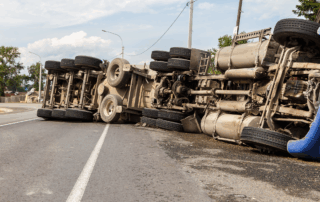Site preparation for an oil and gas well usually looks like any other construction site. The Occupational Safety and Health Administration (OSHA) uses Safety and Health Regulations for Construction (29 CFR 1926) to assess safety compliance during this phase of the development of a drilling site.
Process: Leveling Site
The site is leveled (if necessary) with a bulldozer or a grader.
Hazards:
- Damaging buried pipelines and cables
- Unpredictable weather changes that create unexpected hazards
- Irritant and toxic plants, pollens and other entrained materials
- Uneven ground that could cause bulldozers to roll over
Solutions:
- Perform a site-line location survey.
- Plan for hazards due to unpredictable changing weather.
- After weather changes, conduct inspections for new hazards.
- Protect workers engaged in site clearing from hazards of irritant and toxic plants. Teach workers about available first-aid treatments.
- Provide rollover guards on all equipment used in site-clearing operations.
- Provide overhead and rear canopy guards on rider-operated equipment.
Process: Excavating and Trenching
The scale and duration of excavating and trenching are minor and site-specific. On some drilling sites, a below-ground-level cellar may be excavated. This is where the main borehole will be drilled. A reserve pit and settling pits may be excavated and used for water or drilling fluid discharges.
Hazards:
- Dust and other airborne contaminants can cause respiratory problems or allergic reactions
- Damaging buried pipelines and cables
Solutions:
- Wear appropriate respiratory protection.
- Perform a site-line location survey.
For more risk management solutions, contact INSURICA today.
Source: Occupational Safety & Health Administration
© 2012, 2015, 2017 Zywave, Inc. All rights reserved.
About the Author
Share This Story
Related Blogs
OSHA Announces Top 10 Violations for 2025
OSHA recently revealed its top 10 most frequently cited standards in the 2025 fiscal year using preliminary data. This information is valuable for businesses of all kinds, as it helps them identify common exposures that affect their workforce and gives them the information they need to plan their compliance programs.
Cyber Hygiene for Schools: Teaching Digital Safety to Students
Cyber hygiene for schools is more important than ever in today’s digital learning environment. Teaching digital safety to students not only protects their personal information but also strengthens overall school cybersecurity. With increasing online access in classrooms, cyber hygiene for schools must become a routine part of curriculum planning and student behavior expectations.
Mental Health Benefits Go Mainstream: What Employers Need to Know
Once considered a niche offering or a reactive add-on, mental health benefits have now moved to the center of the employee experience. In 2025, nearly half of U.S. employers offer some form of mental health support beyond traditional EAPs—a sharp rise from just 30% in 2023. This shift isn’t just cultural; it’s strategic.








